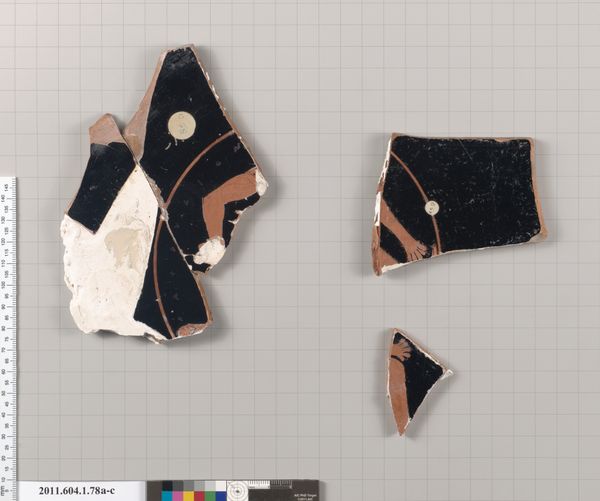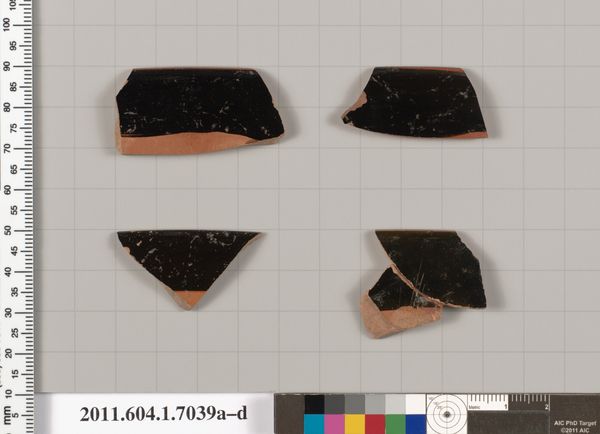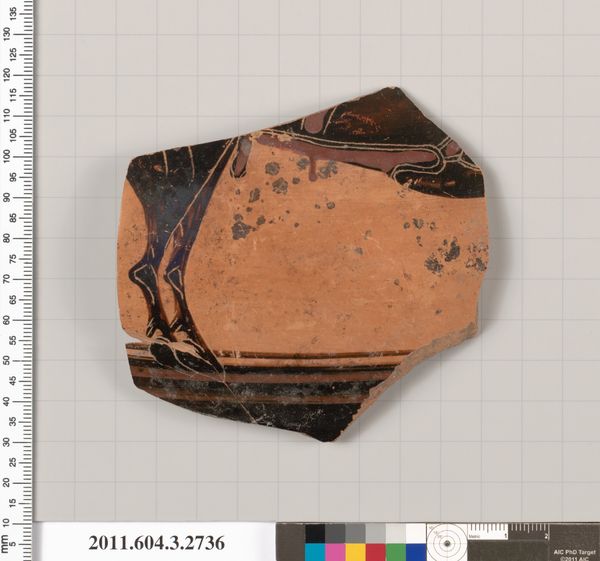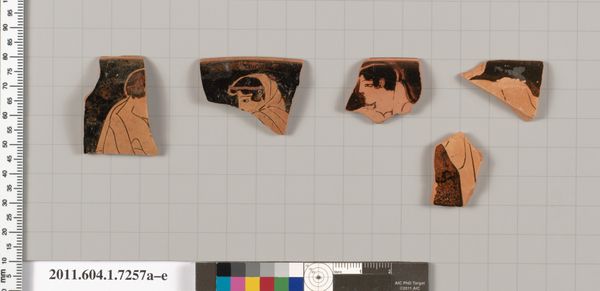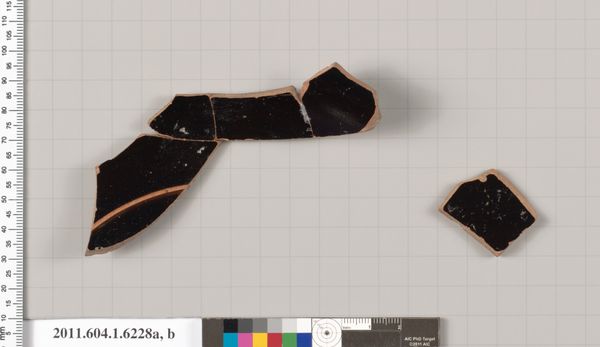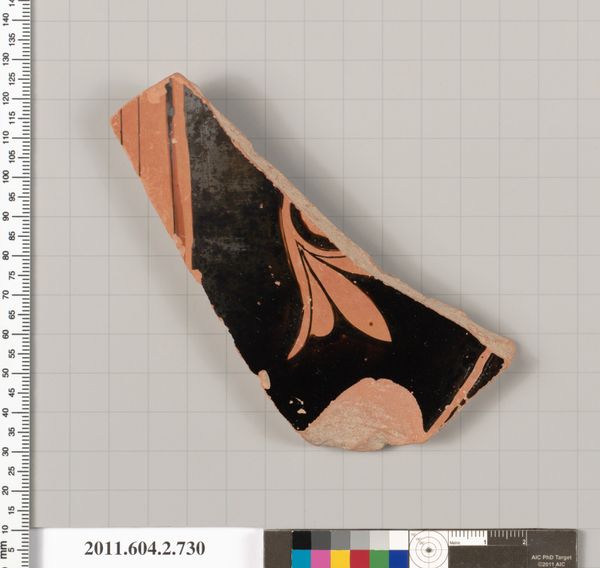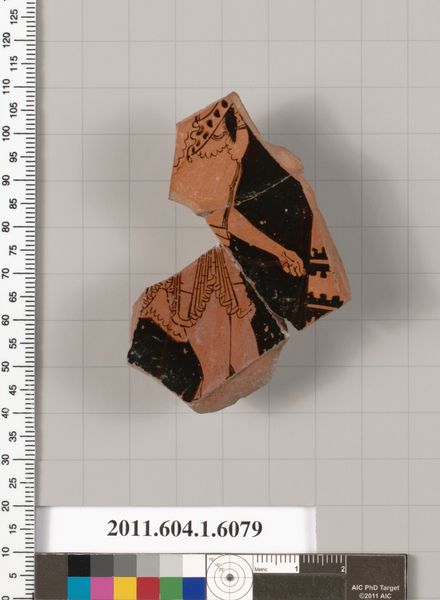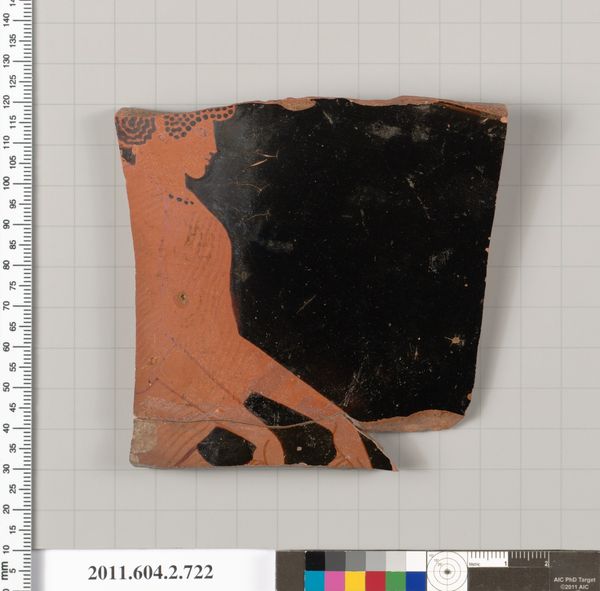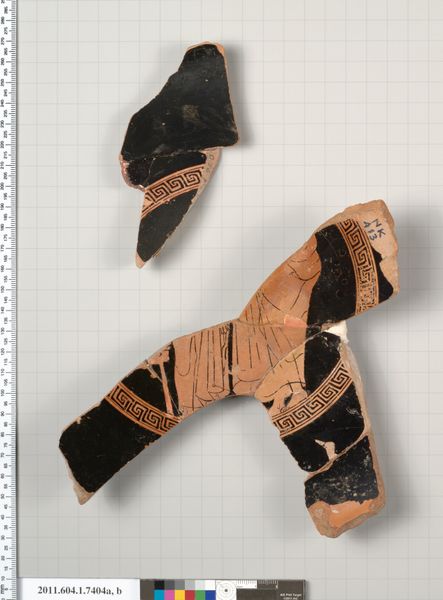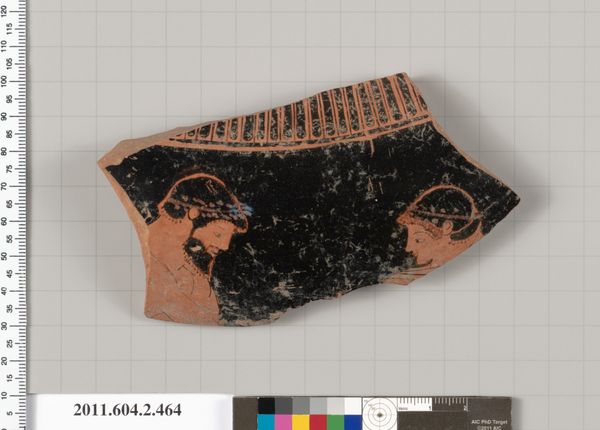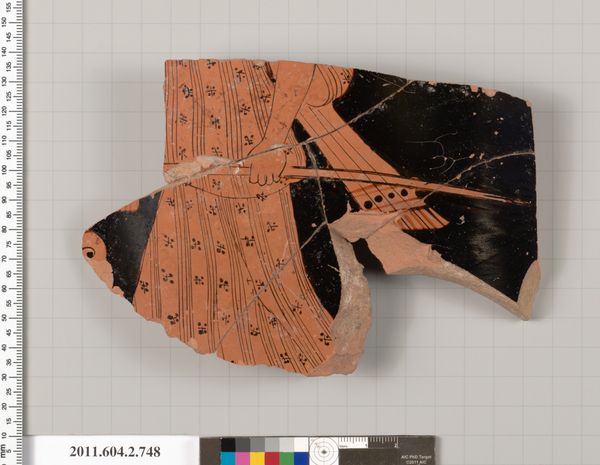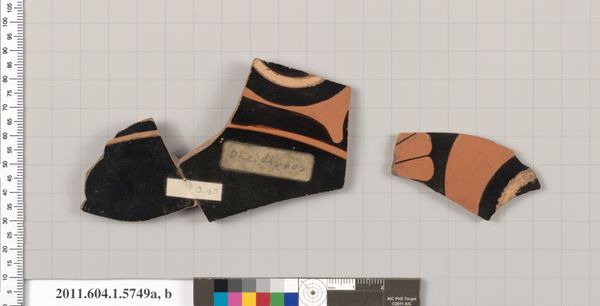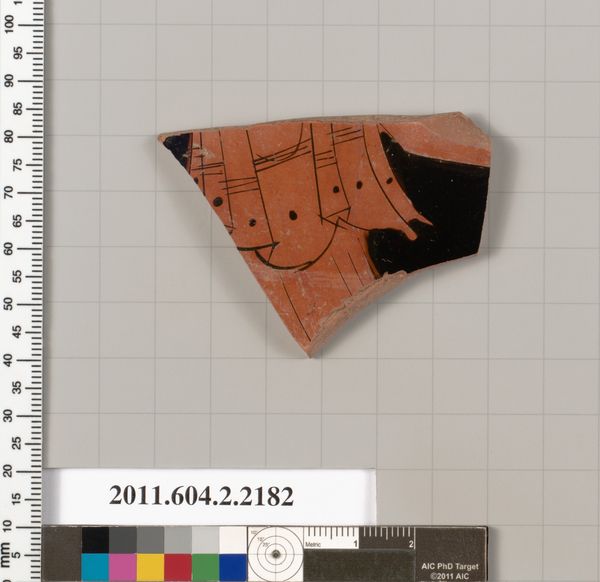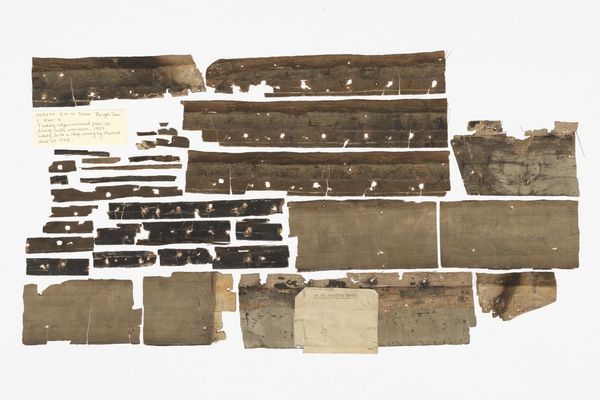
drawing, ceramic
#
drawing
#
greek-and-roman-art
#
ceramic
#
figuration
#
roman-art
#
prop product design
#
geometric
#
ancient-mediterranean
Copyright: Public Domain
Curator: Here we have scattered fragments of an Ancient Greek terracotta jug, dated to around 600 BC. The work, whose origin is unknown, is comprised of these incomplete pieces, currently housed at the Metropolitan Museum. They present an interesting challenge of interpretation. What are your first impressions? Editor: Melancholy, yet also strangely evocative. Even as shards, you can see bold geometry. A beautiful interplay of the earthen ceramic with painted black figures and embellishments—the crisp, angular details amidst a reddish clay base feels incredibly vital despite the fact we are beholding ruins. Curator: Well, let’s delve into that a little. Consider the manufacturing process. We're talking about labor – from quarrying the clay to shaping, firing, and painting this vessel. The surface finish is incredibly smooth—that speaks volumes of the expertise, the many labor hours it must have required and the consumption habits of the commissioner for an object of this time. Editor: Absolutely! And look closer – beyond utility and process to these geometric motifs. We have spirals and rosette patterns – designs recurring through so many eras and cultural expressions, suggesting regeneration and the cyclical nature of life. These symbols go way beyond pure decoration; they hint at deep held, possibly spiritual, associations. Curator: Yes, and how would you say these figures engage with the jug’s original function? It may be difficult, but the patterns speak volumes of cultural use. Consider the social dynamics within the ancient symposia and social stratification. Each pattern acts as a signifier for a cultural practice we know to have been of very high importance. Editor: I agree, the context elevates a vessel like this beyond craft—as fragmented and mundane as they seem to the uninitiated eye. Their aesthetic resonance still triggers responses across centuries, reminding us of our connection with those remote artists and social gatherings through shared visual symbols. Curator: Indeed, a look at these pieces prompts us to rethink our assumptions, reminding us that even seemingly everyday items can embody intense labor, craft skill, artistic meaning and potent cultural information. Editor: Precisely. I find that the fragmented quality strangely enhances this, focusing my attention not just on form or beauty, but the persistent cultural echo reverberating through the pieces—that they survived is nearly miraculous and profoundly reassuring.
Comments
No comments
Be the first to comment and join the conversation on the ultimate creative platform.
